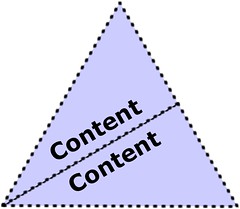We’re winning the war. Content marketing is being integrated more frequently and more fully by marketers of every stripe and size. BtoB Magazine’s recent study, “Content Marketing: Ready for Prime Time” found that content marketing was either “fully integrated” (12%) or “very integrated” (22%) for about a third of respondents. (34% total.) An additional third (36%) were “moderately integrated” and the final third were only “somewhat” integrated or did no content marketing. (23% and 7%, respectively.)


Why the uptick in content marketing?
- Improved Engagement
- Increased Trust
56% cited improved engagement with important audiences and 47% were attracted by a perceived increase in trust by their audiences. Interestingly, only 23% felt that improved SEO was a key reason for content marketing’s use.
Content marketing is clearly not a fad. There’s still plenty of hucksterism surrounding it, as there is with every new marketing strategy. Perhaps that explains some firms’ reluctance to take the leap. But the underlying principles are the same for content marketing as they are for solid marketing in any medium.
And it’s not hard to see why it’s growing in popularity and effectiveness. As traditional marketing has become more and more invasive, interruptions of any kind become less welcomed by target audiences. Content marketing, with its focus on obtaining your audience’s permission and providing valuable information, is the natural response from marketers looking to regain their effectiveness and connect more solidly with their audience.
Not sure how to implement content marketing, or what metrics to measure your progress by? Here are a few more interesting data points from that BtoB study.
Goals / Metrics of Success
- 51% Lead Generation
- 38% Brand Awareness
- 34% Thought Leadership
- 29% Sales
Favored Content Types
- 74% Online Articles
- 65% Email Newsletters
- 60% White Papers
- 59% Blogs
- 58% Case Studies
- 57% Videos
The takeaway for any marketer not actively engaged in content marketing has to be, jump in or be left behind. With only 7% not doing any content marketing, that’s a relatively small group. But thee 23% who are only somewhat integrating content marketing need to step up their efforts if they’re going to keep pace.



